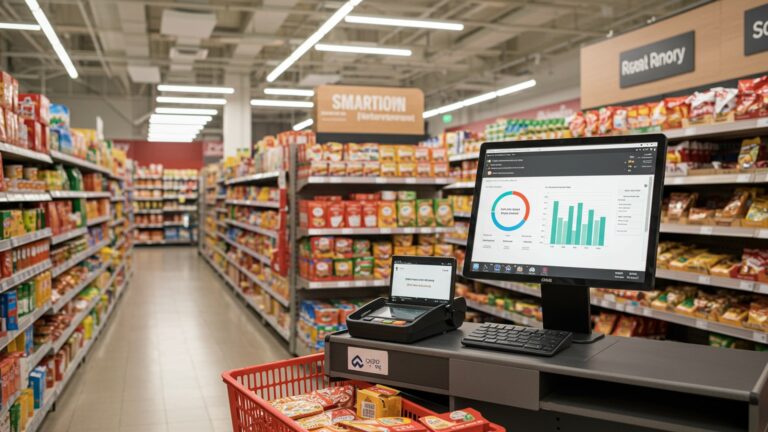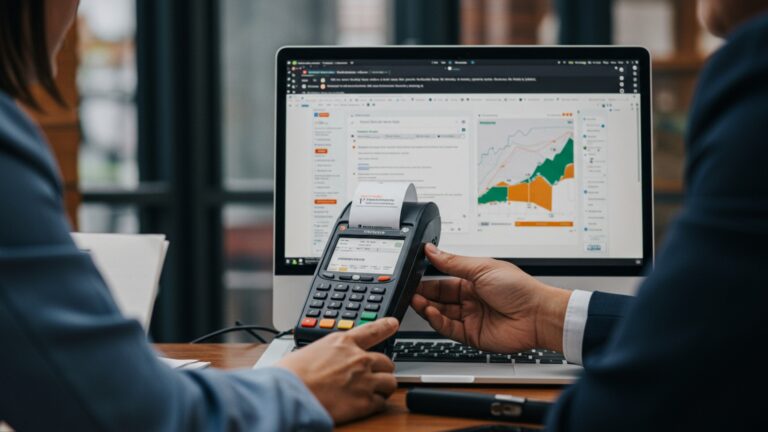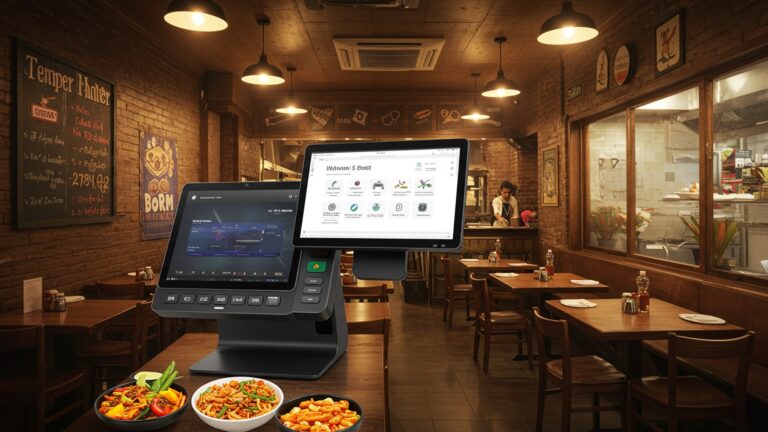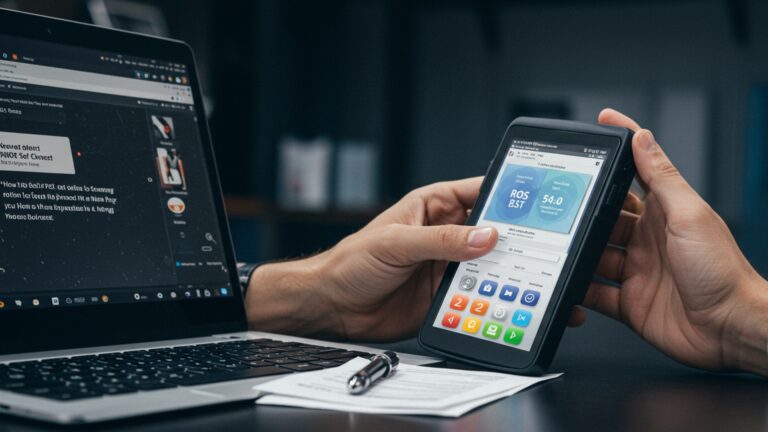How to Choose the Best Restaurant POS System for Seamless Operations
In today’s hyper-competitive culinary landscape, seamless operations dictate a restaurant’s success, moving far beyond traditional order-taking. The strategic selection of restaurant pos software has become paramount, transforming basic transaction processing into an integrated hub for operational excellence. Modern systems empower establishments with cloud-based inventory management, real-time sales analytics. critical integrations for mobile ordering, contactless payments. third-party delivery services. This pivotal technology directly influences everything from kitchen efficiency and staff scheduling to enhancing the guest experience and driving profitability, demanding a discerning approach to ensure future-proof scalability and sustained growth.
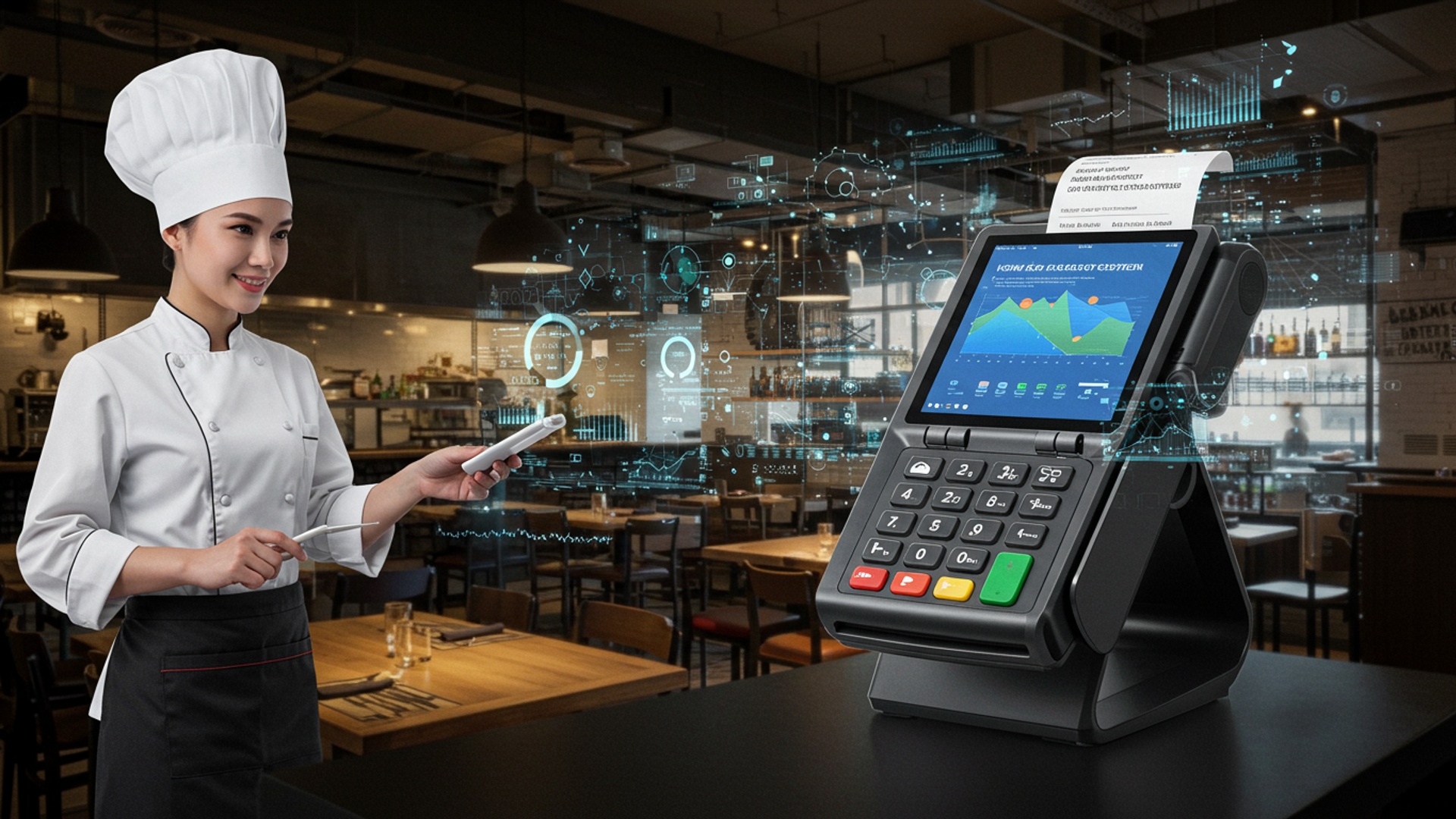
Understanding Restaurant POS Systems: The Foundation for Modern Dining
In today’s fast-paced culinary world, managing a restaurant effectively goes far beyond just great food and service. It requires precision, efficiency. a robust technological backbone. This is where a Point of Sale (POS) system, specifically tailored for restaurants, becomes indispensable. At its core, a POS system is a combination of hardware and software that processes transactions. for a restaurant, it’s the central nervous system that orchestrates almost every operational aspect.
Historically, restaurants relied on manual order pads, cash registers. handwritten inventory logs. This often led to errors, slow service. a lack of actionable data. The evolution of POS systems has transformed this landscape, moving from bulky, on-premise terminals to sleek, cloud-based solutions accessible from anywhere. Modern restaurant POS software is designed to streamline front-of-house (FOH) and back-of-house (BOH) operations, integrating everything from order taking to inventory management and customer relationship tracking.
Key Features to Look for in Restaurant POS Software
When evaluating different restaurant POS software options, a comprehensive feature set is crucial. The right system should act as an all-in-one solution, simplifying complex tasks and enhancing overall efficiency.
- Order Management
- Table Management
- Order Customization
- Kitchen Display Systems (KDS) Integration
- Split Checks & Transfers
- Payment Processing
- EMV & NFC Compatibility
- Online Payment Integration
- Diverse Payment Types
- Inventory Management
- Real-time Tracking
- Recipe Management
- Vendor Management
- Waste Tracking
- Employee Management
- Time Tracking & Payroll Integration
- Shift Scheduling
- Performance Tracking
- Reporting & Analytics
- Sales Reports
- Cost of Goods Sold (COGS)
- Labor Cost Analysis
- Customer Data
- Customer Relationship Management (CRM)
- Loyalty Programs
- Customer Database
- Online Ordering & Delivery Integration
- Seamless integration with your website and popular third-party delivery platforms (e. g. , DoorDash, Uber Eats).
- Manage orders from all channels in one central system.
- Multi-location Management
- Centralized management of menus, inventory, pricing. reporting across all locations.
This is the heart of any restaurant POS system.
Visual floor plans to track table status, assign servers. manage reservations.
Ability to easily modify orders (e. g. , “no onions,” “extra cheese”) and send special instructions to the kitchen.
Digital screens in the kitchen that display orders, improving accuracy and speed, reducing paper waste. allowing for real-time order status updates.
Seamlessly split bills by item or evenly. transfer orders between tables or servers.
Secure and flexible payment options are non-negotiable.
Support for chip cards and contactless payments (Apple Pay, Google Pay).
For online orders and delivery services.
Handling cash, credit/debit cards, gift cards. even mobile payment apps.
Crucial for cost control and waste reduction.
Monitor ingredient levels as they’re used, preventing stockouts and over-ordering.
Link menu items to ingredients to automatically deduct stock.
Track supplier details, order histories. pricing.
Identify and quantify food waste to improve operational efficiency.
Simplify staff administration.
Clock-in/out functionality and exportable data for payroll processing.
Tools to create and manage employee schedules.
Monitor sales per employee, tips. productivity.
Data-driven decisions are key to growth.
Daily, weekly, monthly sales figures, peak hours. popular menu items.
grasp profitability per dish.
Optimize staffing levels.
Track purchase history and preferences.
Build loyalty and drive repeat business.
Create and manage reward points, discounts. special offers.
Store contact data, order history. preferences for personalized marketing.
Essential in the modern dining landscape.
For growing businesses with multiple outlets.
Cloud-Based vs. On-Premise Restaurant POS Software: A Comparison
One of the most significant decisions you’ll face is whether to opt for a cloud-based or on-premise restaurant POS software. Each has distinct advantages and disadvantages.
- Cloud-Based POS
- Example
- On-Premise POS
- Example
Data is stored on remote servers and accessed via the internet.
A tablet-based system where all sales data, menu updates. inventory details are synchronized online. You can manage your restaurant from a laptop at home or on vacation.
Software and data are stored directly on servers within your restaurant.
Traditional POS terminals with dedicated servers located in your back office. You would need to physically be at the restaurant to access most data and make system changes.
| Feature | Cloud-Based POS | On-Premise POS |
|---|---|---|
| Cost Structure | Subscription-based (monthly/annual fees), lower upfront cost. | Higher upfront cost (software license, servers), lower ongoing fees (maintenance). |
| Accessibility | Access data and manage from anywhere with internet. Ideal for multi-location or remote management. | Limited to on-site access, unless complex remote access solutions are set up. |
| Data Backup & Security | Managed by provider, often with robust backup and security protocols. | Managed by the restaurant; requires dedicated IT staff or external support. |
| Updates & Maintenance | Automatic software updates, minimal IT involvement. | Manual updates, often requiring downtime and IT support. |
| Scalability | Easily scale up or down as business needs change. | Requires significant hardware upgrades to scale. |
| Offline Capability | Many offer “offline mode” to process payments during internet outages, syncing later. | Fully functional without internet, as data is local. |
| Customization | Generally more standardized. often flexible via integrations. | Can be highly customized. at a higher cost. |
Hardware Considerations for Your Restaurant POS System
The best restaurant POS software is only as good as the hardware it runs on. A thoughtful selection of hardware ensures smooth, reliable operations.
- POS Terminals
- Touchscreen Monitors
- Tablets (e. g. , iPads, Android tablets)
- Printers
- Receipt Printers
- Kitchen Printers
- Cash Drawers
- Securely store cash and connect directly to the POS system for automated opening after cash transactions.
- Barcode Scanners
- Useful for retail sections (e. g. , merchandise, bottled beverages) or for tracking inventory received.
- Kitchen Display Systems (KDS)
- Digital screens that replace paper tickets, improving communication between front and back of house, reducing errors. speeding up order fulfillment.
Durable, water-resistant. easy to clean.
Offer mobility for tableside ordering, line busting. payment processing. This is particularly popular with cloud-based restaurant POS software.
For customer receipts (thermal printers are common for speed and quiet operation).
Durable, often impact printers, to withstand a hot, humid kitchen environment. Some systems allow for different print routing (e. g. , bar orders to bar printer, food orders to kitchen printer).
When selecting hardware, consider durability, ease of use. compatibility with your chosen restaurant POS software. A common mistake is prioritizing cost over reliability, leading to frequent breakdowns and operational disruptions.
Integration Capabilities: Connecting Your Ecosystem
A truly seamless operation relies on a POS system that doesn’t exist in a silo. Its ability to integrate with other essential business tools is paramount. This interconnectedness allows for automated data flow, reduces manual entry. provides a holistic view of your restaurant’s performance.
- Accounting Software
- Benefit
Automatically syncs sales data, expenses. payroll details to popular accounting platforms like
QuickBooks
,
Xero
, or
Sage
. This eliminates manual data entry, saving countless hours and reducing human error during book-keeping. For instance, a restaurant using a POS that integrates with QuickBooks can see their daily sales figures populate directly into their accounting ledger, providing real-time financial insights.
- Benefit
Integrates orders from platforms like DoorDash, Uber Eats, Grubhub. SkipTheDishes directly into your POS system. This means one tablet to manage all orders, rather than juggling multiple devices, which can be a common pain point for busy restaurants. A unified system prevents missed orders and streamlines kitchen workflow.
- Benefit
Connects with dedicated loyalty program software to track customer points, rewards. gift card balances. This allows for personalized marketing efforts and incentivizes repeat business, all managed within the POS environment.
- Benefit
Syncs with platforms like OpenTable or Resy, allowing hosts to manage table availability and guest seating directly from the POS, ensuring a smooth front-of-house operation.
- Benefit
Integrates with tools like When I Work or Homebase to manage shifts, time-off requests. labor costs more efficiently.
When selecting restaurant POS software, always inquire about its API (Application Programming Interface) capabilities and a list of existing integrations. A robust API signifies a flexible system that can connect with future technologies or niche applications your business might require.
Pricing Models and Hidden Costs
Understanding the financial commitment involved in acquiring and maintaining a restaurant POS system is crucial. Beyond the initial sticker price, various costs can add up, impacting your overall budget.
- Subscription Fees
- Cloud-Based
- On-Premise
- Transaction Fees
- Some providers bundle payment processing with their POS, charging a percentage per transaction or a flat fee. Always clarify these rates, as they can significantly impact your bottom line.
- Be wary of providers who offer incredibly low subscription fees but then hit you with high transaction processing rates.
- Hardware Costs
- Initial purchase of terminals, printers, cash drawers, KDS, etc. Some providers offer hardware bundles or financing options.
- Consider the cost of peripherals and accessories like credit card readers, barcode scanners. network routers.
- Installation and Setup Fees
- Professional installation, network setup. initial menu programming can incur one-time charges.
- Training Costs
- While some providers include basic training, extensive or on-site training may come with additional fees.
- Support and Maintenance
- Beyond the basic subscription, premium support (e. g. , 24/7 dedicated line, on-site visits) might be an extra charge.
- For on-premise systems, consider the cost of IT support for troubleshooting, hardware repairs. software maintenance.
Typically a monthly or annual fee for software access, support. updates. These can vary based on the number of terminals, features included, or transaction volume.
May have a one-time software license fee, with optional ongoing fees for software maintenance and updates.
Always request a detailed quote that itemizes all potential costs. Don’t hesitate to ask about long-term contracts, cancellation policies. any potential penalties. A transparent vendor will be upfront about all costs associated with their restaurant POS software.
Evaluating Vendors and Support
Choosing the right restaurant POS software isn’t just about features and price; it’s also about partnering with a reliable vendor who can support your business long-term. A strong vendor relationship can be the difference between smooth operations and constant headaches.
- Reputation and Reviews
- Research the vendor’s standing in the industry. Look for reviews on independent platforms (Capterra, G2, Trustpilot) and restaurant-specific forums. Pay attention to common complaints or praises.
- A vendor with a history of consistent innovation and positive customer experiences is a good indicator.
- Customer Support
- Availability
- Channels
- Response Time
- Quality
- Training Resources
- What training is provided for staff? Are there online tutorials, video libraries, or on-site training options?
- Ease of training directly impacts how quickly your team can adopt the new restaurant POS software.
- Scalability
- Will the system grow with your business? If you plan to expand to multiple locations, ensure the restaurant POS software supports multi-location management without significant overhauls.
- Can it handle increased transaction volumes during peak seasons or as your customer base grows?
- Vendor Stability
- Is the company financially stable and likely to be around for the long haul? A vendor going out of business could leave you scrambling for support and updates.
Does the vendor offer 24/7 support? Restaurants operate beyond standard business hours, so accessible support is critical.
What support channels are available? (Phone, email, live chat, knowledge base).
Inquire about typical response and resolution times for critical issues. A system going down during a busy dinner rush requires immediate attention.
Do they have knowledgeable staff who grasp restaurant-specific challenges?
When you’re comparing vendors, don’t just look at their sales pitch. Ask for references from other restaurants similar to yours. if possible, speak to existing customers about their real-world experience with the restaurant POS software and the vendor’s support.
Implementation and Training: Smooth Transition
The transition to a new restaurant POS system can be daunting. with proper planning and comprehensive training, it can be a seamless upgrade. A well-executed implementation minimizes disruption and maximizes staff adoption.
- Planning Phase
- Menu Digitization
- Hardware Setup
- Staff Roles & Permissions
- Data Migration
- If transitioning from an older system, plan how to migrate existing customer data, inventory counts. sales history. Some vendors offer migration services.
- Staff Training
- Phased Approach
- Hands-on Practice
- Role-Specific Training
- Q&A Sessions
- Reference Materials
- Go-Live Support
- On-Site Presence
- Emergency Protocol
Prepare your entire menu, including modifiers, pricing. ingredients, in a digital format compatible with the new system.
Map out where terminals, printers. KDS screens will be placed. Ensure network infrastructure (Wi-Fi, Ethernet) is robust enough.
Define access levels for different staff roles (e. g. , manager, server, bartender, kitchen staff).
Don’t try to train everyone at once. Start with managers and key staff, then roll out to the rest of the team.
Provide ample opportunity for staff to practice using the restaurant POS software in a non-live environment. Set up mock orders, practice splitting checks. sending orders to the kitchen.
Tailor training to individual roles. Servers need to know order entry and payment, while kitchen staff need to grasp the KDS.
Encourage questions and address concerns openly to build confidence.
Provide cheat sheets or quick guides for common tasks.
If possible, have a vendor representative or a super-user available on-site during the first few days of operation with the new system.
Ensure all staff know who to contact and what steps to take if an issue arises.
A restaurant owner shared their experience: “When we switched our restaurant POS software, the biggest challenge wasn’t the technology itself. getting our long-term staff comfortable. We spent weeks in practice mode before launch, simulating busy shifts. That investment in training paid off immensely, making the transition almost seamless and drastically reducing errors.”
Actionable Checklist for Choosing Your Restaurant POS Software
To summarize, here’s a step-by-step checklist to guide you through the selection process for your next restaurant POS system:
- Assess Your Needs
- What specific problems are you trying to solve? (e. g. , slow service, inventory waste, complex payroll)
- What is your budget for initial setup and ongoing fees?
- What are your current and future growth plans (e. g. , single location, multiple locations, online delivery)?
- Identify Must-Have Features
- Create a list of essential features (e. g. , table management, inventory, online ordering, KDS).
- Prioritize features based on your restaurant’s unique operational flow.
- Cloud vs. On-Premise
- Decide which model best suits your accessibility, budget. IT capabilities.
- Research Vendors
- Identify at least 3-5 top contenders based on industry reputation and initial feature alignment.
- Read reviews, look for case studies. check their social media presence.
- Request Demos
- Schedule personalized demos. Prepare a list of questions and specific scenarios (e. g. , “Show me how to split a check three ways and add a custom modifier”).
- Involve key staff members (manager, head chef, lead server) in the demo process to get their input.
- Evaluate Integrations
- Confirm compatibility with your existing accounting, payroll. third-party delivery platforms.
- Ask about their API for future integration possibilities.
- grasp Pricing & Contracts
- Get detailed, itemized quotes covering all hardware, software, installation, training. ongoing fees.
- Clarify transaction processing fees.
- Read the contract carefully for terms, cancellation policies. support agreements.
- Assess Customer Support & Training
- Test their support channels with a few questions.
- Inquire about onboarding, training resources. ongoing support availability (especially 24/7).
- Check Scalability
- Ensure the restaurant POS software can grow with your business without requiring a complete system overhaul.
- Pilot Test (if possible)
- If the vendor offers a trial or a smaller-scale pilot, take advantage of it to get hands-on experience before a full commitment.
- Make Your Decision
- Choose the restaurant POS software that offers the best balance of features, cost, support. long-term viability for your specific restaurant’s needs.
Conclusion
Choosing the ideal restaurant POS system is not merely a purchase; it’s a strategic investment in your establishment’s future efficiency and guest satisfaction. Beyond basic billing, modern systems integrate seamlessly with online delivery platforms like Swiggy or Zomato, a non-negotiable in today’s market. offer robust table management and inventory control. My personal tip? Never skip the demo and trial period. This hands-on experience is crucial for assessing its intuitive interface and your team’s comfort level, ensuring it truly streamlines, rather than complicates, your daily operations. From my experience, a system that provides real-time sales analytics and helps manage customer loyalty programs, much like advanced restaurant billing software, empowers better decision-making. Look for scalability and reliable vendor support, as these are paramount for long-term success. Embrace this selection process as an opportunity to revolutionize your restaurant’s flow, driving not just faster transactions but also an unparalleled dining experience that keeps customers returning.
More Articles
How to Choose the Best Restaurant Billing Software India 8 Smart Guide
Discover 10 Best Online Ordering POS Systems for India Restaurants
7 Essential Android POS Systems for Indian Restaurant Success
How to Choose and Implement Cloud Based POS Software for Your Business
Learn How to Master POS Billing Software for Faster Sales and Efficiency
FAQs
What exactly is a POS system for a restaurant?
A Restaurant POS (Point of Sale) system is the central hub for all your daily operations. It’s not just for ringing up orders anymore; it handles everything from taking customer orders, processing payments, managing tables, tracking inventory. even generating reports on sales performance. Think of it as the brain of your restaurant’s front and back of house.
Why can’t I just stick with a basic cash register?
While a cash register handles transactions, a modern POS system does so much more. It streamlines order taking (sending orders directly to the kitchen), helps manage inventory to prevent waste, tracks employee shifts, provides detailed sales analytics. often integrates with online ordering or loyalty programs. It saves time, reduces errors. gives you crucial insights to run your business better.
What are the absolute must-have features in a restaurant POS system?
Definitely look for features like intuitive order management (for dine-in, takeout, delivery), table management, robust payment processing (including split bills and mobile payments), inventory tracking, employee management (time tracking, permissions). detailed reporting. Also, consider if it offers kitchen display systems (KDS) and customer relationship management (CRM) tools.
What’s the typical cost range for a decent restaurant POS system?
Costs vary quite a bit depending on the features, hardware. number of terminals you need. You might pay an upfront cost for hardware (terminals, printers, card readers) and then a monthly subscription fee for the software, which can range from around $50 to $200+ per month per terminal. Some providers offer all-in-one bundles, so it’s best to get a few quotes.
Will my team struggle with a new POS system. how tough is the transition?
The ease of transition largely depends on the system’s user-friendliness and the training provided. A good POS system should have an intuitive interface, making it quick for staff to learn. Look for providers that offer comprehensive training, good support. easy data migration tools. While there’s always a learning curve, a well-chosen system should minimize disruption.
Can a new POS system play nice with my existing accounting software or online ordering platforms?
Absolutely, integration capabilities are super crucial! The best POS systems offer integrations with popular accounting software (like QuickBooks), third-party online ordering platforms, loyalty programs. even reservation systems. This saves you tons of manual data entry and ensures all your business data is connected and consistent, giving you a unified view of your operations.
How can I tell if a POS system provider is reliable and offers solid customer support when I need it?
Do your homework! Check out online reviews and testimonials from other restaurant owners. Ask potential providers about their uptime guarantees, emergency support hours (24/7 is ideal for restaurants). what kind of training and ongoing technical assistance they offer. A responsive and knowledgeable support team is crucial, especially when your system goes down during a busy shift.

